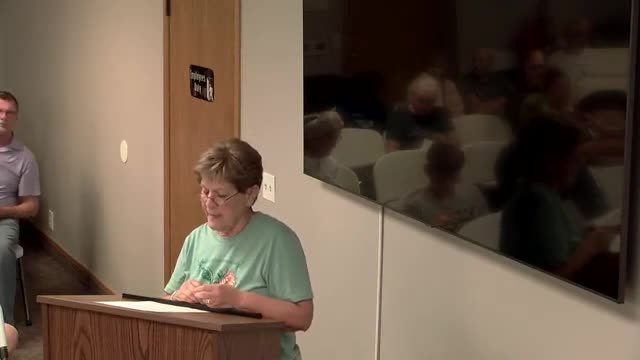Residents rally against utility scale solar projects
July 30, 2024 | Reno County, Kansas

This article was created by AI summarizing key points discussed. AI makes mistakes, so for full details and context, please refer to the video of the full meeting. Please report any errors so we can fix them. Report an error »

During a recent government meeting, significant discussions emerged regarding the regulation of commercial solar energy systems, particularly those classified as utility scale. A speaker proposed a more precise definition for these systems, suggesting that the regulations specify \"utility scale\" and clarify that they pertain to facilities exceeding ten acres and capable of generating more than 2 megawatts (MW) of energy. This recommendation aims to eliminate confusion surrounding the term \"commercial,\" which can be misinterpreted as referring to large buildings rather than expansive energy facilities.
The speaker highlighted concerns about the environmental impact of utility-scale solar installations, referencing a study conducted by the National Renewable Energy Laboratory in collaboration with the University of Minnesota and other institutions. This study analyzed stormwater runoff from five solar sites across the United States, revealing that soil compaction during construction significantly contributes to runoff issues. The findings indicated that nearly 100% of runoff could occur due to the removal of topsoil and heavy grading, particularly in areas with clay soil, which is prevalent in the local watershed.
In light of these findings, the speaker advocated for prohibiting utility-scale solar developments in the watershed area, emphasizing the potential risks to the Cheney Reservoir, a critical water source for Wichita and surrounding communities. The speaker noted that 373 residents had signed petitions supporting this prohibition, reflecting community concerns about the environmental implications of such projects.
Additionally, the speaker raised economic concerns, stating that young farmers in the area are at a disadvantage due to the lucrative lease offers made by large renewable energy companies. This situation could hinder their ability to compete for land and sustain their farming operations, ultimately impacting local agriculture.
The meeting underscored the tension between renewable energy development and environmental protection, as well as the economic challenges faced by local farmers. The discussions will likely influence future regulations regarding solar energy systems in the region.
The speaker highlighted concerns about the environmental impact of utility-scale solar installations, referencing a study conducted by the National Renewable Energy Laboratory in collaboration with the University of Minnesota and other institutions. This study analyzed stormwater runoff from five solar sites across the United States, revealing that soil compaction during construction significantly contributes to runoff issues. The findings indicated that nearly 100% of runoff could occur due to the removal of topsoil and heavy grading, particularly in areas with clay soil, which is prevalent in the local watershed.
In light of these findings, the speaker advocated for prohibiting utility-scale solar developments in the watershed area, emphasizing the potential risks to the Cheney Reservoir, a critical water source for Wichita and surrounding communities. The speaker noted that 373 residents had signed petitions supporting this prohibition, reflecting community concerns about the environmental implications of such projects.
Additionally, the speaker raised economic concerns, stating that young farmers in the area are at a disadvantage due to the lucrative lease offers made by large renewable energy companies. This situation could hinder their ability to compete for land and sustain their farming operations, ultimately impacting local agriculture.
The meeting underscored the tension between renewable energy development and environmental protection, as well as the economic challenges faced by local farmers. The discussions will likely influence future regulations regarding solar energy systems in the region.
View full meeting
This article is based on a recent meeting—watch the full video and explore the complete transcript for deeper insights into the discussion.
View full meeting
